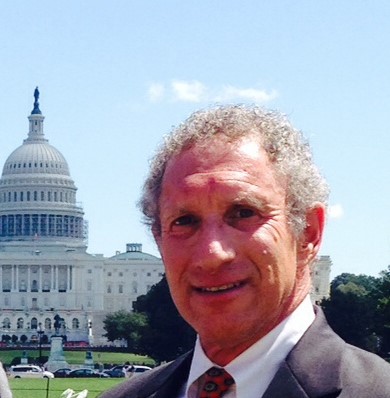Reflecting on Data as a Service Provider in Education
 Karen GrossOne would think that all educators have been keen for decades on collecting, analyzing, thinking about, using data creatively and making data available across the disciplines and within their own institutions. Sadly, this has not happened. Education is way behind healthcare in this regard.
Karen GrossOne would think that all educators have been keen for decades on collecting, analyzing, thinking about, using data creatively and making data available across the disciplines and within their own institutions. Sadly, this has not happened. Education is way behind healthcare in this regard.
Within the past several decades, though, have data have become the “new kid on the education block” and have garnered real interest. Indeed, institutions now talk about data informed decision-making although to be sure, it often stops -- not enables – innovation because the absence of data is rolled out as the excuse for making forward progress. And data are now being used with greater stringency to evaluate the effect and effectiveness of programs, initiatives, laws, theories and practices. Accreditors expect to see data results when they review campuses and schools across the educational pipeline.
Several examples suffice. Most new programmatic offerings test effectiveness. Thus, if a school institutes a new language program, it is probable that the program will be evaluated and compared to predecessor programs and perhaps other programs in existence for the same age level used elsewhere, although the measures of success and the rigor of the research can be questioned for sure. Academics, not surprisingly, also debate the type of data that has value (qualitative versus quantitative) and the best methodology for insuring statistically significant findings.
For years now, economists and scientists have had a lock on empiricism within the academy; their data research informs everything from whether employment rates are rising or falling; whether businesses are profit maximizing; whether new research on particular drugs is producing more beneficial health outcomes. For institutions, there are professionals hired – institutional researches and they appear to be at the forefront of institutional efforts to garner and understand data. In short, data are kept largely in the hands of experts --- those who use data as part of their disciplines and those within institutions charged with data safekeeping.
There is another way in which data are now being deployed in academia: to showcase information that consumers can access to make wiser decisions about institutions of higher learning. Two particular databases come to mind. The Department of Education created the College Scorecard several years ago, which instrument is planned to continue during the Trump Administration. More recently, the Department created a database dealing with accreditation. Both databases are designed to provide consumers with information to enable better decision-making.
The theory is right: data can inform decisions but only if the data are complete and of the highest quality and provide the right information to evaluate. Unfortunately, both the Scorecard and Accreditation databases are fraught with problems, including missing data (transfer students are not included in Scorecard data points); the Accreditation Database does not reference state accreditation. Surely missing data undermine the quality of information made available to consumers, most of whom do not know that data are missing.
The Scorecard also fails by favoring earnings as the sine quo non of quality; for some, educational success involves vastly more than money. And, as to Accreditation, the presence of accreditation is not synonymous with quality, despite all appearances to the contrary; that is because the Department is not assessing the quality of the accreditors it authorizes. And, the government’s data does not include many accreditors, including state accreditation, which is important on many levels including programmatic oversight and new program evaluation.
The data uses just described most assuredly have value but they are not “stretching” our use of data and the myriad of ways in which it can be more student enhancing and more institutionally beneficial. What is accurate is that new data approaches require broader, more forward looking and bold uses of data – innovations in terms of data collection and data use that pushes current boundaries. And, it requires re-education of students, parents, teachers and administrators so they are aware of and capable of using these new approaches.
Consider these three new potential ways data could be deployed in the education sphere to provide more personalized, valuable and powerful outcomes:
- Suppose there was a large database that identified which students succeeded (defined as graduating and gaining employment in their field of interest) at the 7000 institutions of higher learning in the US (and perhaps add in abroad as well given current trends). Suppose there were key personal data points identified as to the students who garnered success (age; gender; race; ethnicity; religion; high school GPA; first gen; favorite courses and teachers; living situations; activities like sports; psycho-social engagement; arrests; drug use; ACEs). Now, suppose a student in high school entered his or her personalized data, and it was matched to students/now graduates with identical or similar data points (say at a matching rate of 90% or better). Then the database would release the names of the institutions where these matched students might succeed (one having already succeeded). Note how different this is from College Scorecard or the common college guidebooks. This is personalized data that are providing a service. And, of course, we could study whether the students attending the matched institutions had similar success. We have to learn whether this approach would reify privilege or instead create greater success among diverse populations.
- Now suppose that we identified physical indicators of college student distress – rising blood pressure; failure to leave one’s room; absence from class; high cortisol levels; rapid change in respiration rate; rise in heart rate. Familial conflict or illness; breakup with a romantic partners or friend; roommate dilemmas. Suppose these (or their surrogates) were capable of being measured (which they are) on devices that students would wear on their wrist or their chest. And suppose that there was a confidential monitoring system of students who were wearing the devices; then suppose that the presence of certain indicators (or changes) indicated “danger” of varying sorts (depression; suicide; loneliness; disassociation). There could then be appropriate professional, academic, peer or psychosocial intervention. These data would not just be for suicide prevention though they could play that role. These data would be “signals” enabling colleges to identify students at risk and provide means by which those students could “pivot right.” To be sure, there are key privacy concerns and issues of “paternalism” or “maternalism.” Indeed, with current approaches, the latter charge is often made with intrusive advising; some suggest all this resembles coddling. But, there are definable and positive upsides.
- Finally, ponder a massive database where employers indicated what openings they had and what skill sets prospective employees needed, defined with care to cover both “hard” and “soft” skills. Now suppose that students (pre-graduation or seeking internships) could complete a form that allowed entry of their own data points, tied to those provided by the employers. And suppose there were a matching system such that employers and students could find each other. And, suppose, too, that there were ways students could learn – in a personal way – what one or two skill sets they needed to be a better match and ways those gaps could be filled easily and at low cost. And suppose employers could learn about candidates who were close matches but for one or two skill sets that were wanted and they – the employer – provided the course or intervention or experience to and for these almost “perfect” matches.
All of these three proposed uses of data are possible and some are doable in the near term. And, what they all accomplish is that they enable data to be a service provider at a personalized level. The data are made to work for and work with students among others. And, the data are programmed for enabling success, protecting privacy and furthering student entry into the workforce.
In terms of personalized data, we are only limited by our imaginations. In healthcare, as Part One of this article describes, we are already making inroads and education has not kept up to say the least. Perhaps it is ironic that in healthcare, success of data as a service provider requires re-education so that individuals access the available big data pools. Transporting data as a service provider into the real of education itself, the re-education is more complex; we would need re-education so that individuals and entities used the available large data pools but we would also need to change the culture in terms of how we think about and use data.
The future encourages use of data as a service provider – in healthcare and in education and in other fields where data can be collected and analyzed and deployed with power. The ability to animate these uses of data rests in our individual and collective hands. It’s high time we stepped out of our comfort zones and into a place and space that can help people and institutions succeed. What limits us now is not technology; it is our own fears and habits and comfort levels. Consider this article a call to action --- namely stepping forward into a new way of thinking and talking about and using data. Just repeat the words: data as service provider. Data as service provider. Data as service provider.
There’s power there.
- Login to post comments
